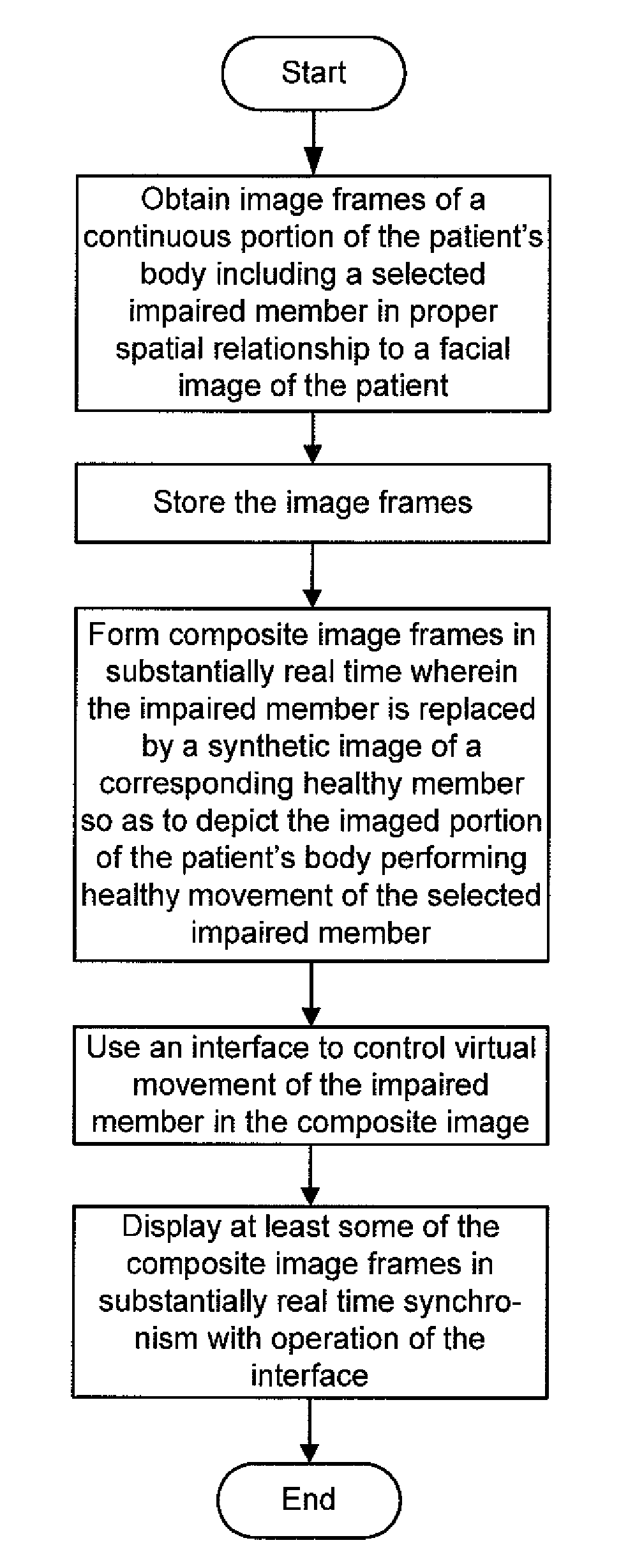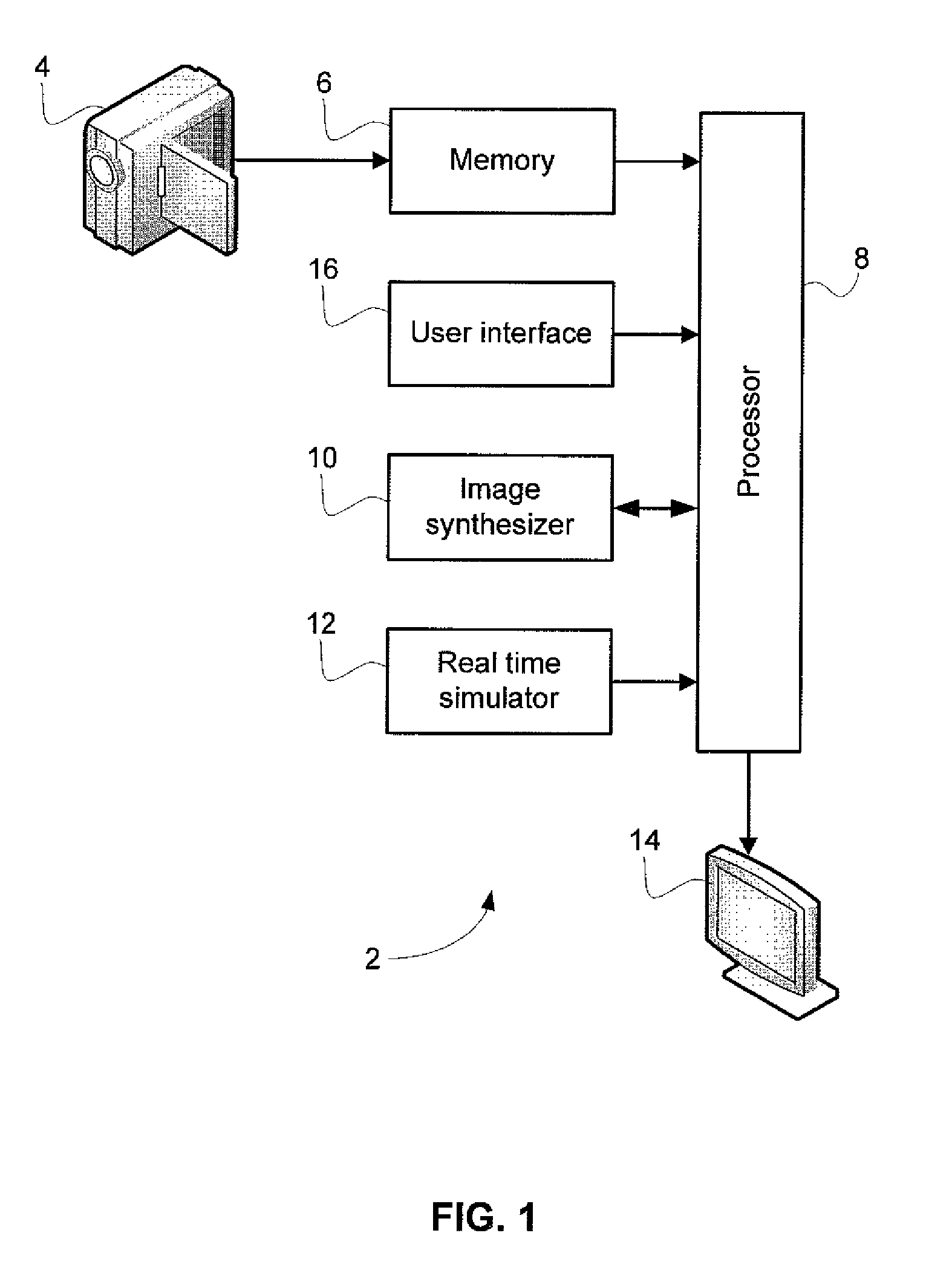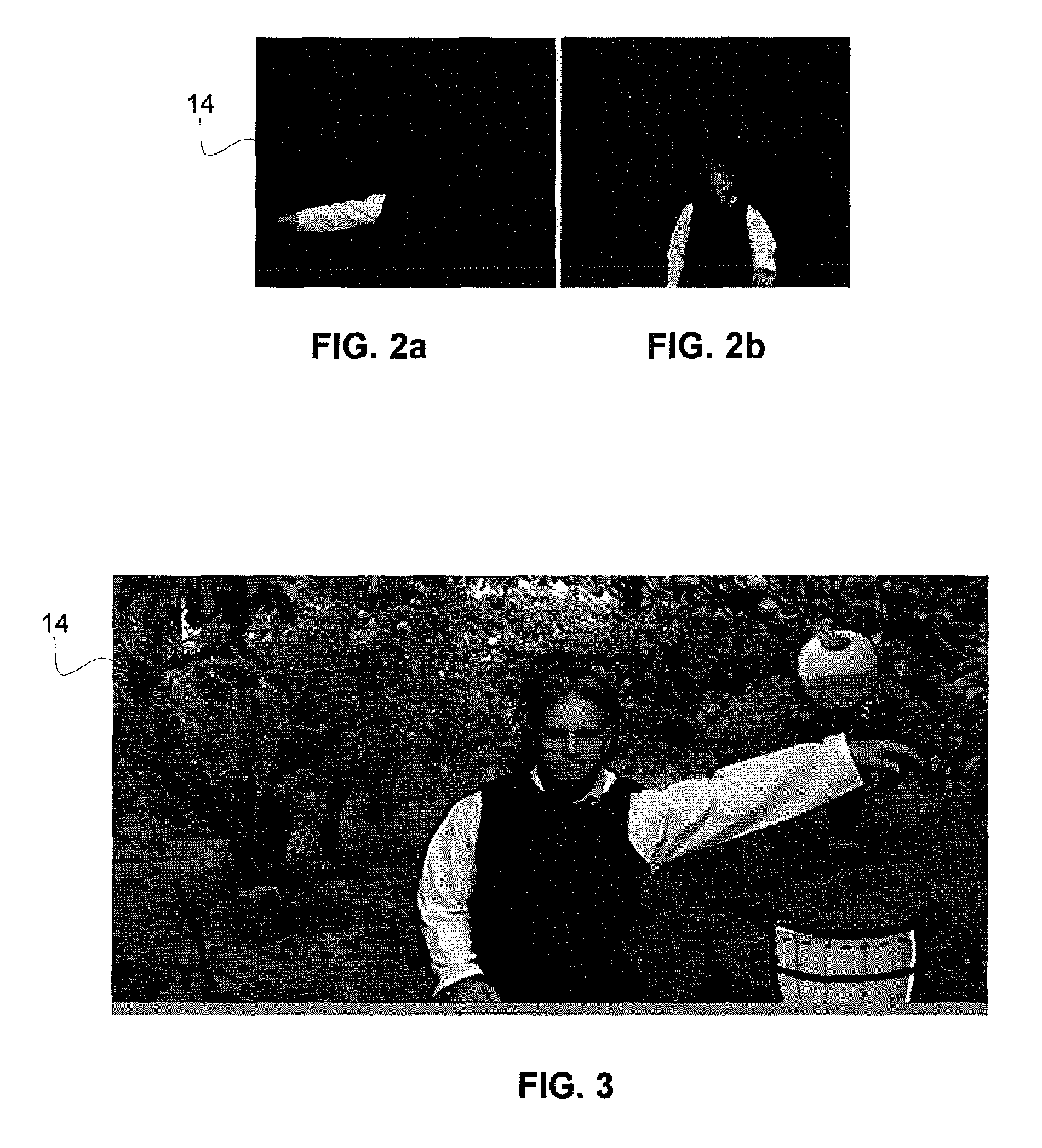System and method for treating chronic pain
a system and chronic pain technology, applied in the field of chronic pain, can solve the problems of reducing treadmill performance, increasing pain severity, and high pain fear of patients, and achieve the effect of enhancing both body schema and body image, and enhancing the representation of body schema
- Summary
- Abstract
- Description
- Claims
- Application Information
AI Technical Summary
Benefits of technology
Problems solved by technology
Method used
Image
Examples
Embodiment Construction
[0068]FIG. 1 shows schematically a system 2 for treating chronic pain and / or impairment. The system 2 includes a video camera 4 (constituting a video imaging device) that captures successive image frames of a patient's body or selected portion(s) thereof. The image frames are stored in a memory 6 coupled to a processor 8. The processor 8 processes the image frames for forming a virtual representation of the entire or selected portion of the patient's image. The output from the processor 8 is fed to an image synthesizer 10 for generating new video image frames, possibly 3D images, which are fed into a real time simulator 12 coupled to a display screen 14. The video images may be formed by recording a movie clip of the patient showing full movement of a healthy limb and may be conveyed over a communications network using video streaming or other known techniques. The processor 8 processes image frames as described in further detail below, to identify the impaired limb and replace the ...
PUM
 Login to View More
Login to View More Abstract
Description
Claims
Application Information
 Login to View More
Login to View More - R&D
- Intellectual Property
- Life Sciences
- Materials
- Tech Scout
- Unparalleled Data Quality
- Higher Quality Content
- 60% Fewer Hallucinations
Browse by: Latest US Patents, China's latest patents, Technical Efficacy Thesaurus, Application Domain, Technology Topic, Popular Technical Reports.
© 2025 PatSnap. All rights reserved.Legal|Privacy policy|Modern Slavery Act Transparency Statement|Sitemap|About US| Contact US: help@patsnap.com



